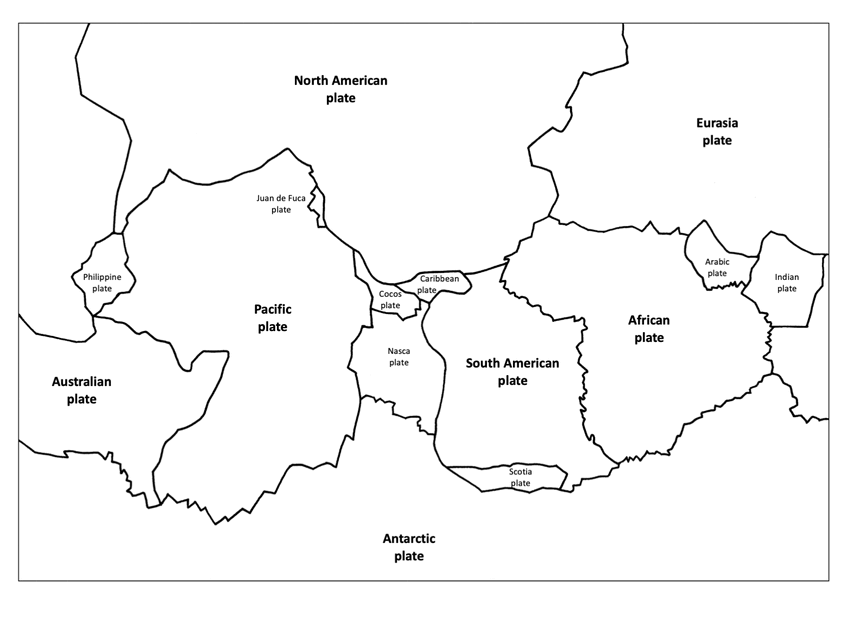Constantly moving
The viscous mantle moves in the inside of the Earth and drives the shifting of the tectonic plates at the Earth’s surface. There are thick continental plates, thin oceanic plates and continental-oceanic plates. The latter ones are partly thin and covered by the sea and partly thick and protruding from the sea. Some plates collide with each other. When this happens the heavier ocean plate slides under the lighter continental plate and melts in the mantle again (convergent boundaries). Other plates move apart (divergent boundaries). The gaps in the crust are filled up with material of the mantle. This happens in form of volcanic eruptions. (divergent boundaries). Plates can also slide part each other. Jerky earthquakes happen there because there is a lot of friction at these boundaries (transform boundaries).

H. Grillitsch (University of Vienna) changed after htpps://commons.wikimedia.org/wiki/File:Tectonic_plate_boundaries.png
You can easily recognize, that the tectonic plates are of complete different shape than the continents and the oceans. There are large plates (Eurasian Plate, African Plate, North American Plate, South American Plate, Pacific Plate, and Antarctic Plate). In between there are small plates (Arabian Plate, Cocos Plate, Nazca Plate, Caribbean Plate, Scotia Plate, and Philippine Plate) and tiny plates (not in the drawing).

